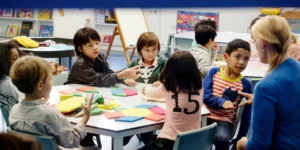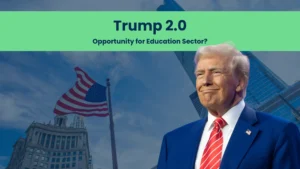As we look toward 2025, the education landscape continues to evolve rapidly, driven by technological advancements, changing societal needs, and innovative pedagogies. Here are the key trends shaping the future of education, supported by data and insights from industry experts.
1. Rise of Artificial Intelligence in Education
AI is transforming classrooms by personalizing learning experiences.
- Adaptive Learning Platforms: Tools like MathsWatch and Johnnie Max leverage AI to tailor lessons to individual student needs, improving engagement and outcomes.
- Global Market Growth: The AI in education market is projected to grow from $4 billion in 2022 to $20 billion by 2027, at a CAGR of 38.5%.
- AI Tutors: Virtual tutors like Studeo are gaining popularity, providing on-demand academic support.
2. Immersive Learning with AR and VR
Immersive technologies like Augmented Reality (AR) and Virtual Reality (VR) are creating dynamic, interactive learning environments.
- Engagement Statistics: Studies show that AR/VR tools increase student engagement by up to 75% compared to traditional methods.
- Global Adoption: UNESCO reports that AR/VR applications are being used in 70+ countries to teach STEM, history, and language.
3. Competency-Based Learning (CBL)
CBL emphasizes mastery of skills over seat time, focusing on personalized learning goals.
- Policy Integration: The National Education Policy (NEP) 2020 in India promotes competency-based assessments, pushing schools toward this model.
- Success Stories: Finland’s CBL approach has been linked to higher critical thinking and problem-solving skills among students.
4. Social and Emotional Learning (SEL)
SEL programs focus on building emotional intelligence, collaboration, and conflict resolution skills.
- Growing Importance: The Collaborative for Academic, Social, and Emotional Learning (CASEL) notes that students in SEL programs perform 11% better academically.
- Indian Adoption: CBSE’s integration of SEL into its curriculum is paving the way for widespread adoption in Indian schools.
5. EdTech’s Role in Accessibility
Technology is bridging gaps in education for underprivileged communities.
- Government Initiatives: Schemes like PM eVidya in India aim to provide digital education to 25 million students through online classes and TV channels.
- Global Reach: EdTech platforms like Khan Academy and Byju’s have seen a 40% increase in rural user engagement since 2023.
6. Green Education and Sustainability
As climate consciousness grows, education systems are integrating sustainability into curricula.
- UNESCO’s Role: UNESCO’s Education for Sustainable Development (ESD) aims to equip students with the knowledge to combat global challenges like climate change.
- School Initiatives: Over 80% of schools in Europe and North America now include sustainability modules.
7. Focus on Global Competency and Cultural Exchange
Preparing students for global challenges requires nurturing global citizens.
- International Curriculum Growth: The number of international schools in India is set to double by 2030, according to UDISE reports. Presently there are over 900 International Schools.
- Virtual Exchanges: Platforms like eTwinning connect schools across countries to promote cultural understanding and collaboration.
8. Microlearning for Lifelong Learning
With attention spans shrinking, bite-sized learning modules are gaining traction.
- Corporate Partnerships: Companies like Google and IBM partner with institutions to offer micro-certifications, making education industry-relevant.
- Impact Statistics: Learners are 50% more likely to complete micro-courses than traditional programs.
Conclusion: The Road Ahead
The future of education is bright, dynamic, and inclusive. From AI-driven personalization to sustainability-focused curricula, 2025 promises a more innovative and equitable education landscape. Schools, governments, and stakeholders must collaborate to ensure these trends translate into meaningful impact.
As an organization dedicated to making global education accessible in India, IME is actively bridging the gap between international innovation and local education needs. By introducing transformative products like Mastory, Earth Cubs, BT3, ICA and many more IME is equipping Indian schools to stay ahead of these trends.
Schools and educators partnering with IME not only gain access to cutting-edge solutions but also join a growing network committed to reshaping education for a better future.





